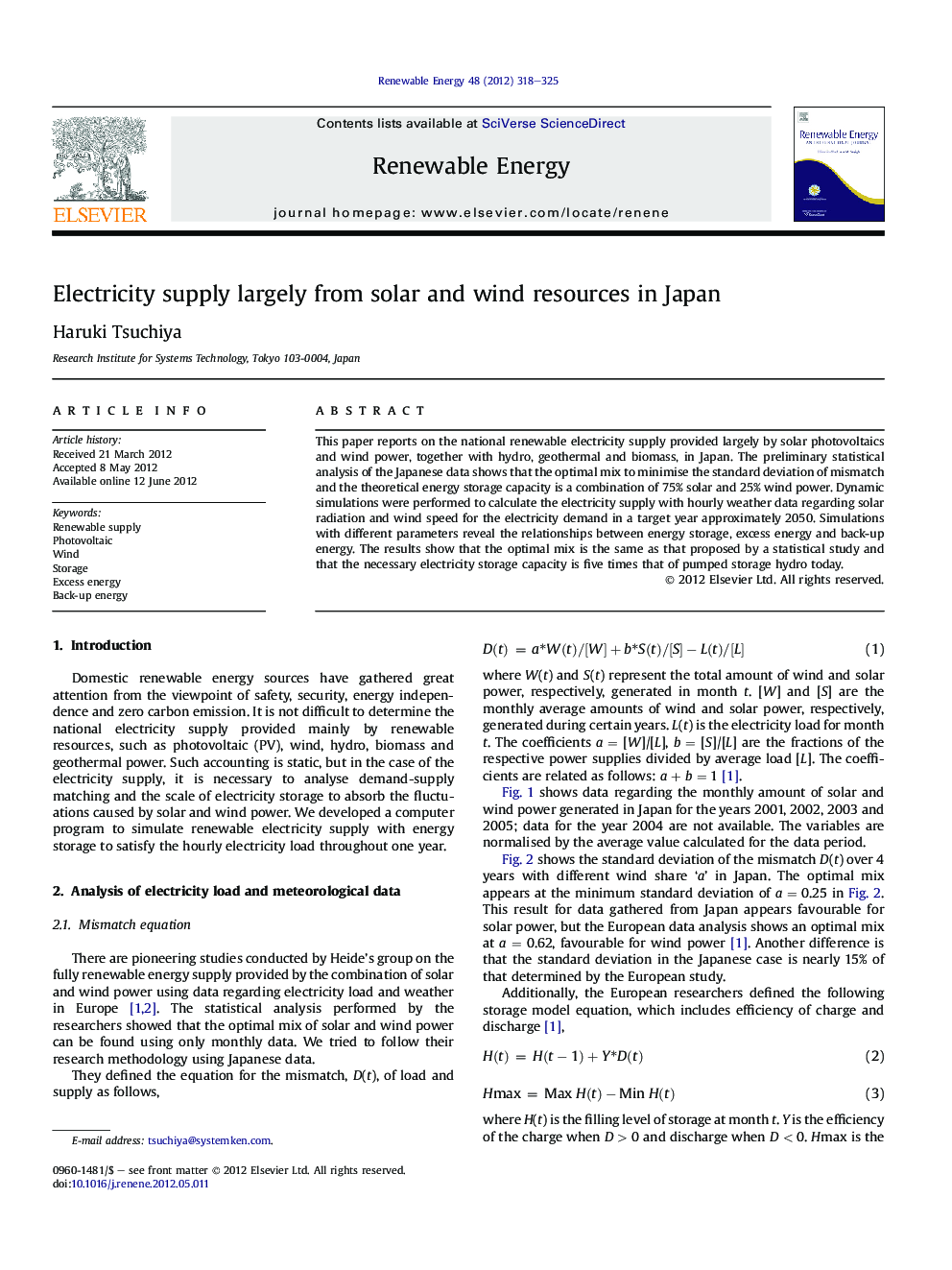| Article ID | Journal | Published Year | Pages | File Type |
|---|---|---|---|---|
| 300884 | Renewable Energy | 2012 | 8 Pages |
This paper reports on the national renewable electricity supply provided largely by solar photovoltaics and wind power, together with hydro, geothermal and biomass, in Japan. The preliminary statistical analysis of the Japanese data shows that the optimal mix to minimise the standard deviation of mismatch and the theoretical energy storage capacity is a combination of 75% solar and 25% wind power. Dynamic simulations were performed to calculate the electricity supply with hourly weather data regarding solar radiation and wind speed for the electricity demand in a target year approximately 2050. Simulations with different parameters reveal the relationships between energy storage, excess energy and back-up energy. The results show that the optimal mix is the same as that proposed by a statistical study and that the necessary electricity storage capacity is five times that of pumped storage hydro today.
► We developed a dynamic simulator on the renewable electricity supply in Japan. ► Statistical analysis shows that the optimal mix is 75% solar and 25% wind. ► We introduced the sum of back-up, excess power, and battery loss as a criterion. ► Dynamic simulations show it is minimum at the above combination of solar and wind. ► They show the battery effects become less when the battery capacity increases.
